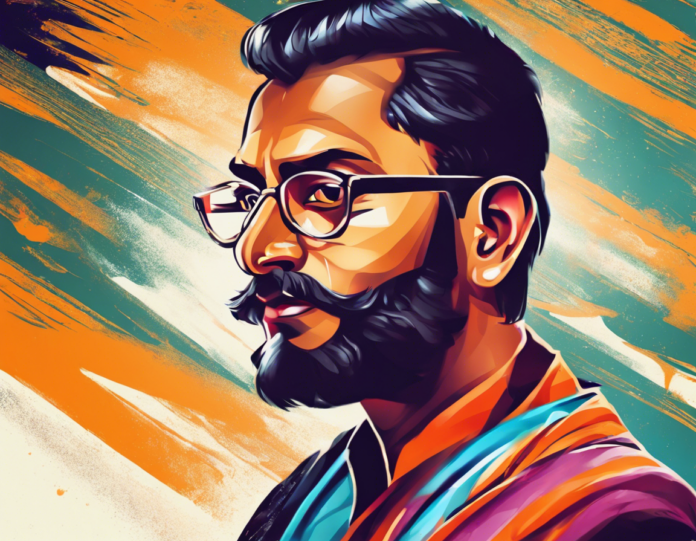Introduction:
Bhai Phota is a traditional Hindu festival celebrated primarily in the eastern regions of India, particularly in West Bengal, Odisha, and parts of Assam. Also known as Bhai Dooj or Bhai Tika in other parts of the country, it is a joyous occasion that celebrates the bond between siblings. This festival occurs on the second day after Diwali, which falls on the last day of the Bengali month of Kartik.
History and Significance:
The celebration of Bhai Phota has a deep historical and mythological significance. According to Hindu mythology, it is believed that on this day, Lord Krishna visited his sister Subhadra after defeating the demon king Narakasura. Subhadra welcomed her brother by applying a ceremonial mark on his forehead and treating him with sweets. This act of sibling love and bonding is considered the origin of the Bhai Phota festival.
Customs and Traditions:
The Bhai Phota ritual involves the sister applying a tilak on her brother’s forehead with sandalwood paste, vermillion, and rice. She also performs an aarti to bless him with happiness and longevity. In return, the brother showers his sister with gifts and pledges to protect her throughout his life. The exchange of gifts symbolizes love, respect, and the promise of lifelong support between siblings.
Preparations and Celebrations:
Leading up to the festival, homes are cleaned and decorated with rangoli patterns, flowers, and lights. Sisters often dress in traditional attire and prepare a variety of sweets and delicacies for their brothers. Families come together to perform the rituals, exchange gifts, and share a festive meal. The atmosphere is filled with love, laughter, and affection as siblings cherish their bond and create lasting memories.
Regional Variations:
While Bhai Phota is predominantly celebrated in Bengal, Odisha, and Assam, similar festivals honoring sibling relationships are observed throughout India. In the northern states, Bhai Dooj is marked by sisters applying a tikka on their brothers’ foreheads and receiving gifts in return. In the southern regions, the festival is known as Yama Dwitiya, where sisters pray for the well-being of their brothers and perform aarti to ward off untimely death.
Modern Twist on a Traditional Festival:
In recent years, the essence of Bhai Phota has transcended traditional boundaries, with many people embracing a more inclusive approach to the festival. It is not uncommon to see friends, cousins, and even colleagues partaking in the celebrations, exchanging warm wishes and tokens of affection. This modern interpretation reflects the universal values of love, unity, and togetherness that lie at the heart of Bhai Phota.
FAQs (Frequently Asked Questions):
1. What is the significance of Bhai Phota in Hindu culture?
Bhai Phota holds great significance in Hindu culture as it celebrates the sacred bond between siblings. It symbolizes love, protection, and mutual respect, reinforcing the importance of family ties.
2. How is Bhai Phota different from Raksha Bandhan?
While both festivals celebrate the bond between siblings, Raksha Bandhan is more widely observed across India and involves the sister tying a rakhi (sacred thread) on her brother’s wrist. Bhai Phota, on the other hand, includes the sister applying a tilak on her brother’s forehead.
3. Can Bhai Phota be celebrated between cousins and friends?
Yes, Bhai Phota can be celebrated between cousins, friends, or any individuals who share a close bond akin to that of siblings. It is a festival that encourages the expression of love and gratitude towards loved ones.
4. What are some traditional sweets prepared for Bhai Phota?
Popular sweets prepared for Bhai Phota include sandesh, rasgulla, laddu, kheer, and gujiya among others. These delicacies are shared and enjoyed during the festive celebrations.
5. Is there any specific time or auspicious moment to perform the Bhai Phota ritual?
Ideally, the Bhai Phota ritual should be performed during the muhurat specified in the Hindu calendar for that particular day. It is believed that performing the ritual at the auspicious time enhances the blessings and auspiciousness of the occasion.
6. How does Bhai Phota strengthen the bond between siblings?
Bhai Phota strengthens the bond between siblings by providing an opportunity for them to express their love, appreciation, and support for each other. The act of performing the ritual and exchanging gifts symbolizes a lifelong commitment to stand by one another in times of need.
7. Can sisters celebrate Bhai Phota without their brothers present?
Yes, sisters can certainly celebrate Bhai Phota in the absence of their brothers by performing the rituals on their behalf. They can apply the tilak, offer prayers, and share sweets to honor the sacred bond of siblinghood, even if their brothers are not physically present.
8. Are there any specific prayers or mantras recited during Bhai Phota?
While there are no specific prayers or mantras mandated for Bhai Phota, sisters often recite shlokas or verses invoking blessings upon their brothers for health, happiness, and prosperity. The emphasis is on heartfelt prayers and good wishes for the well-being of loved ones.
9. How can modern interpretations of Bhai Phota be incorporated into the traditional celebrations?
Modern interpretations of Bhai Phota can be incorporated by expanding the circle of celebration to include friends, extended family members, and even colleagues who share a special bond. Embracing diversity and inclusivity can enrich the festive spirit and make it a truly joyous occasion for all.
10. Is Bhai Phota celebrated differently in different regions of India?
While the essence of Bhai Phota remains the same across regions, there are variations in customs, rituals, and traditional practices observed in different parts of India. These regional nuances add to the cultural diversity and richness of the festival, making it a unique and cherished celebration for all.




